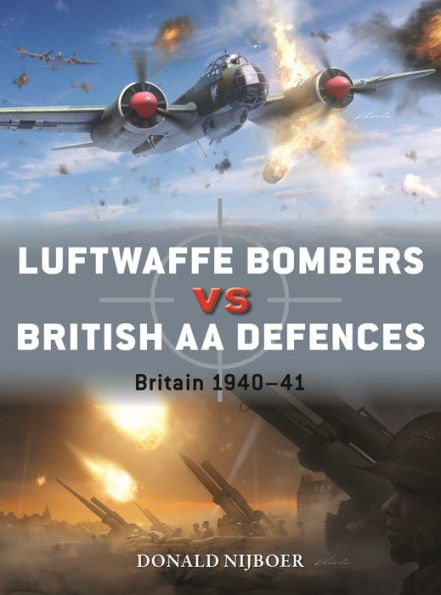When the Battle of Britain commenced in July 1940, the Luftwaffe committed more than 1,200 medium bombers, 300 Ju 87 Stukas and 760 Bf 109 and Bf 110 fighters to the campaign. The response from British AA Command mustered 359 4.5in. guns, 666 3.7in. guns and 226 3in. guns, as well as 3,538 light and medium AA guns to tackle low-level Luftwaffe raiders, but was under-gunned and overstretched, struggling to provide sufficient weapons for every key site. Nevertheless, AA gunners shot down some 300 German aircraft by the end of the Battle of Britain on 31 October 1940, upping this count to 578 before the Blitz finished on 11 May 1941, and leading an estimated 48 per cent of Luftwaffe bombers to turn back because of heavy AA fire.
In this action-packed study, World War 2 aviation expert Donald Nijboer examines the capabilities of both sides, and explores how British AA Command not only shot down so many enemy aircraft, but also forced them to fly higher, broke up their formations and decreased their accuracy. Tactical diagrams, maps, archival photographs and newly commissioned artwork provide additional insight and detail, helping to bring the bitter struggle over the skies of southern England to life.
When the Battle of Britain commenced in July 1940, the Luftwaffe committed more than 1,200 medium bombers, 300 Ju 87 Stukas and 760 Bf 109 and Bf 110 fighters to the campaign. The response from British AA Command mustered 359 4.5in. guns, 666 3.7in. guns and 226 3in. guns, as well as 3,538 light and medium AA guns to tackle low-level Luftwaffe raiders, but was under-gunned and overstretched, struggling to provide sufficient weapons for every key site. Nevertheless, AA gunners shot down some 300 German aircraft by the end of the Battle of Britain on 31 October 1940, upping this count to 578 before the Blitz finished on 11 May 1941, and leading an estimated 48 per cent of Luftwaffe bombers to turn back because of heavy AA fire.
In this action-packed study, World War 2 aviation expert Donald Nijboer examines the capabilities of both sides, and explores how British AA Command not only shot down so many enemy aircraft, but also forced them to fly higher, broke up their formations and decreased their accuracy. Tactical diagrams, maps, archival photographs and newly commissioned artwork provide additional insight and detail, helping to bring the bitter struggle over the skies of southern England to life.

Luftwaffe Bombers vs British AA Defences: Britain 1940-41
80
Luftwaffe Bombers vs British AA Defences: Britain 1940-41
80
Product Details
| ISBN-13: | 9781472865762 |
|---|---|
| Publisher: | Bloomsbury USA |
| Publication date: | 04/22/2025 |
| Series: | Duel , #145 |
| Pages: | 80 |
| Product dimensions: | 7.24(w) x 9.76(h) x 1.00(d) |
